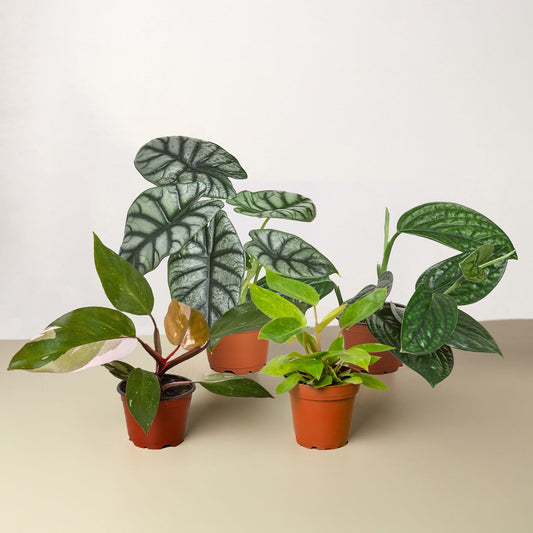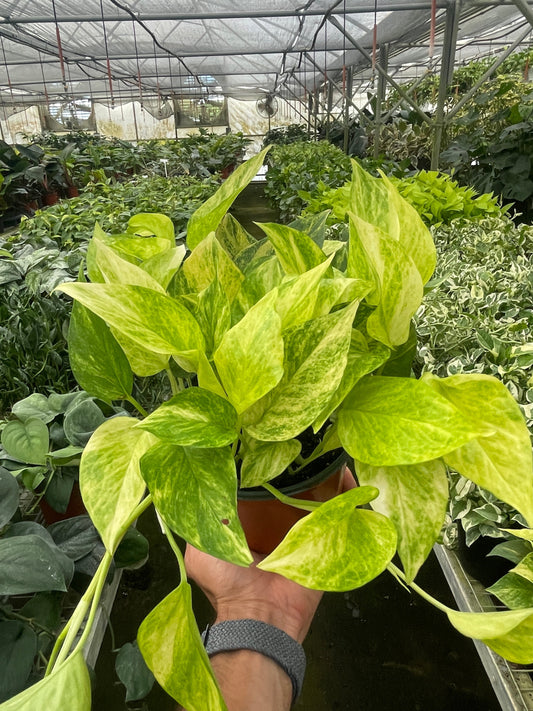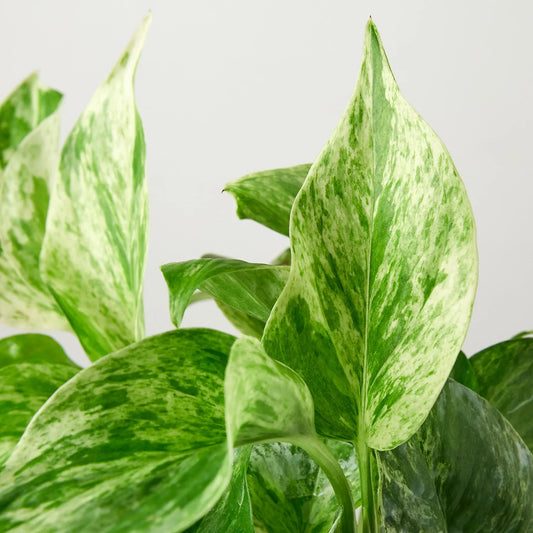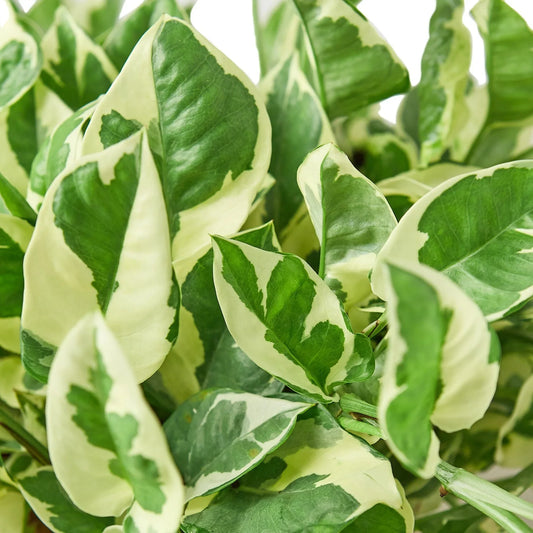What To Do About Pygmy Date Palm Stem Rot
Cafe Planta Team
Pygmy date palms, with their graceful presence, are beloved additions to many homes. They exude a tropical vibe that brightens any space. However, like all living things, they have their share of issues. One of the most concerning problems for these charming palms is stem rot. This condition, if left unchecked, can spell doom for your plant.
In this article, we’ll walk through the ins and outs of pygmy date palm stem rot. From identifying the early signs to taking preventive measures, and even tackling the issue head-on if it arises, we’ll cover it all. So, if you're keen on keeping your pygmy date palm healthy and vibrant, read on!
Understanding Stem Rot in Pygmy Date Palms
Stem rot is a fungal disease that affects the base or trunk of the pygmy date palm. It often starts at the soil line and works its way up, attacking the plant from within. The fungi responsible for this condition thrive in moist conditions, making overwatering a primary culprit.
When the palm is infected, the rot can cause the tissues to break down, leading to a host of problems. The plant may appear wilted or exhibit yellowing leaves, and the trunk may become soft. Unfortunately, by the time these symptoms are visible, the disease might already be well-established.
It’s essential to catch stem rot early because the disease can spread quickly. The longer it goes untreated, the more damage it can cause, sometimes leading to the plant's death. Understanding what causes stem rot and how to recognize it can be the first step in safeguarding your plants.
Identifying the Symptoms of Stem Rot
Spotting the signs of stem rot early can make all the difference. Here are some symptoms to look out for:
- Yellowing Leaves: One of the earliest signs is often the yellowing of leaves. This discoloration starts at the base of the plant and works its way up.
- Wilting: Even if the soil is moist, a plant with stem rot may appear wilted or droopy. This is because the roots are unable to transport water properly.
- Soft Trunk: The trunk may feel soft or spongy to the touch. This is a clear indicator that the internal tissues are breaking down.
- Mold or Fungus Growth: You might notice mold or fungal growth at the base of the plant. This can appear as a white, fuzzy substance or dark spots.
- Unpleasant Odor: As the tissues decay, they can emit a foul odor, signaling trouble beneath the surface.
Keep a close eye on your plants, especially if they’ve been exposed to conditions that encourage fungal growth. Regular monitoring can help catch these symptoms early, offering a better chance at saving your plant.
Preventing Stem Rot
Prevention is always better than cure, and with stem rot, it's no different. Here are some proactive measures you can take to prevent stem rot from affecting your pygmy date palm:
- Proper Drainage: Ensure your plant's pot has adequate drainage holes. This prevents water from pooling at the bottom, which can create a breeding ground for fungi.
- Watering Routine: Stick to a consistent watering schedule, allowing the top inch of soil to dry out between waterings. Overwatering is a common cause of stem rot.
- Soil Choice: Use a well-draining soil mix. You can enhance drainage by adding perlite or sand to your potting mix.
- Humidity Levels: Be cautious of high humidity environments, especially if your plant is indoors. If needed, use a dehumidifier to maintain optimal conditions.
- Plant Location: Position your plant in a spot with good air circulation and indirect sunlight. This helps the soil dry faster and reduces fungal growth risks.
By being mindful of these factors, you can create an environment where your pygmy date palm thrives and is less susceptible to stem rot.
Diagnosing the Cause of Stem Rot
If you suspect stem rot, it’s crucial to determine the underlying cause. Often, it’s a combination of factors that contribute to the problem.
First, assess the watering habits. Have you been overzealous with the watering can? If so, adjusting your approach can make a big difference. Also, consider the pot’s drainage. Is water sitting at the bottom? If you’re unsure, try lifting the pot after watering. It should feel significantly lighter after a few days if the drainage is adequate.
Next, inspect the soil. Is it staying damp for extended periods? This could indicate poor drainage or a high humidity level in the room. You might need to repot your plant with a more suitable soil mix.
Finally, check for any signs of pests or other diseases. Sometimes, a pest infestation can weaken the plant, making it more susceptible to fungal infections. Look for small insects or unusual markings on the leaves and trunk.
By pinpointing the cause, you can tailor your treatment plan to effectively address the problem.
Treating Stem Rot in Pygmy Date Palms
If you find yourself dealing with stem rot, don't panic. While challenging, treatment is possible, especially if caught early. Here’s a step-by-step approach:
- Remove Affected Areas: Using sterilized pruning shears, carefully cut away any affected leaves and parts of the trunk. Be sure to sterilize your tools before and after to prevent the spread of the fungus.
- Repot the Plant: Gently remove the plant from its pot, and carefully shake off excess soil. Check the roots for any signs of rot and trim away any damaged areas. Repot using fresh, well-draining soil and a clean pot.
- Fungicide Application: Apply a fungicide to the affected areas and the new soil. Be sure to follow the instructions on the label for the best results.
- Adjust Care Routine: Modify your watering schedule to prevent overwatering. Ensure the plant is in a location with good air circulation and appropriate light levels.
- Monitor Progress: Keep a close eye on your plant over the next few weeks. Look for signs of recovery, such as new growth and improved leaf color.
Treating stem rot requires patience and diligence, but with the right care, your plant can bounce back to its former glory.
Long-term Care and Maintenance
Once your pygmy date palm has recovered, ongoing care is essential to prevent future issues. Consider these tips for long-term maintenance:
- Regular Inspection: Make it a habit to regularly inspect your plant for any signs of distress. Early detection is key to preventing serious problems.
- Consistent Watering: Stick to a watering schedule that allows the soil to dry out between waterings. Remember, it’s better to underwater than overwater.
- Seasonal Adjustments: Adjust your care routine with the changing seasons. During colder months, reduce watering and ensure the plant isn’t exposed to drafts.
- Fertilization: Feed your palm with a balanced fertilizer during the growing season to support healthy growth.
- Proper Pruning: Regularly remove any dead or yellowing leaves to allow the plant to focus its energy on new growth.
With consistent care and attention, your pygmy date palm can continue to thrive for years to come.
Common Mistakes and How to Avoid Them
Even the most seasoned plant parents can make mistakes. Here are some common pitfalls to avoid when caring for pygmy date palms:
- Overwatering: It’s easy to overwater, especially if you’re eager to care for your plant. Always check the soil moisture before adding more water.
- Ignoring Drainage: Ensure your pot has proper drainage holes, and avoid letting the plant sit in water.
- Wrong Soil Mix: Using the wrong soil can lead to poor drainage and root rot. Opt for a well-draining mix designed for palms.
- Inconsistent Light: Pygmy date palms prefer bright, indirect light. Too much direct sunlight can scorch the leaves, while too little can stunt growth.
- Neglecting Routine Checks: Regularly check your plant for signs of pests or disease. Catching issues early makes them easier to manage.
By avoiding these common mistakes, you’ll set your pygmy date palm up for success.
Benefits of Keeping a Pygmy Date Palm
Despite the challenges of caring for a pygmy date palm, the rewards are well worth it. Here are some benefits of having this elegant plant in your home:
- Air Purification: Like many houseplants, pygmy date palms help purify the air, removing toxins and improving indoor air quality.
- Aesthetic Appeal: With its delicate leaves and graceful silhouette, it adds a touch of tropical elegance to any space.
- Stress Reduction: Caring for plants can be therapeutic, offering a sense of accomplishment and reducing stress levels.
- Natural Humidifier: The plant naturally releases moisture into the air, which can be beneficial in dry indoor environments.
Embracing the beauty and benefits of a pygmy date palm can enhance the ambiance of your home while promoting well-being.
Creating a Plant-Friendly Environment
To keep your pygmy date palm happy, it’s essential to create an environment where it can thrive. Here are some tips for fostering a plant-friendly space:
- Consider Light Levels: Place your plant in a spot that receives plenty of indirect sunlight. If needed, use sheer curtains to filter harsh rays.
- Manage Temperature and Humidity: Keep the room at a stable temperature and monitor humidity levels. Avoid placing your palm near vents or heaters.
- Group Plants Together: If you have multiple plants, consider grouping them together. This can create a microenvironment with higher humidity levels.
- Rotate Your Plants: Regularly rotate your plants to ensure even light exposure and prevent uneven growth.
By making a few adjustments, you can create a welcoming environment that supports the health and vitality of your pygmy date palm.
Final Thoughts
Stem rot in pygmy date palms can be a challenging issue, but with vigilance and the right care, it’s possible to overcome it. By understanding the symptoms, taking preventive measures, and knowing how to treat the condition, you can keep your plant healthy and thriving.
At Cafe Planta, we're passionate about helping you care for your plants. Whether you're looking for new houseplants, plant care accessories, or just some friendly advice, we're here for you. Feel free to email us or reach out on Instagram. Let's make your plant journey a joyful and rewarding one!



















